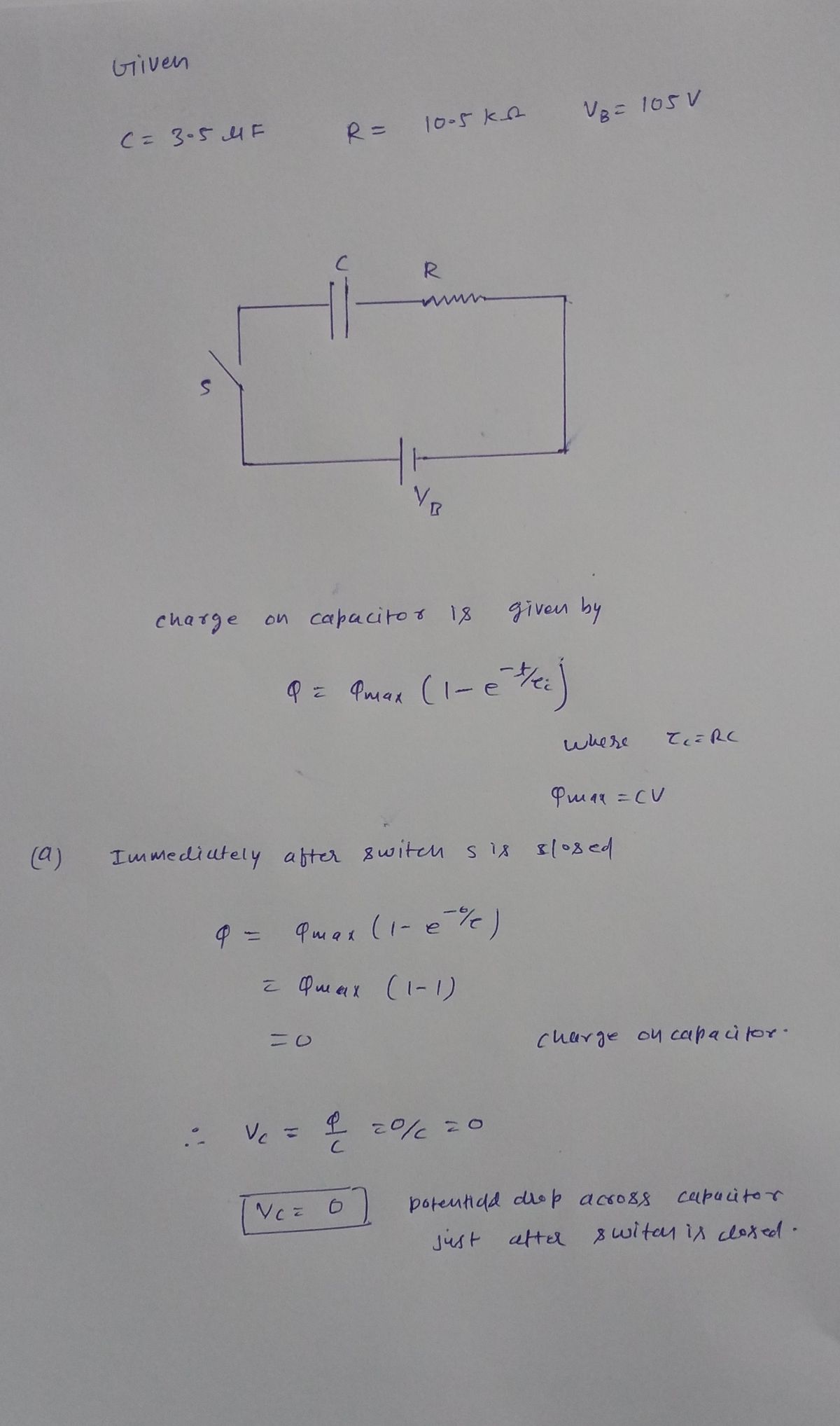(11%) Problem 12: A capacitor with a capacitance of 3.5 pF is initially uncharged. It is connected in series with a switch of negligible resistance, a resistor with a resistance of 10.5 k2, and a battery that has a potential difference of 105 V. VB ©theexpertta.com DA 20% Part (a) Immediately after the switch is closed, what is the voltage drop Vc, in volts, across the capacitor? Grade Summary Vc,o = V Deductions Potential 0% 100% sin() cos() tan() 7 8. Submissions HOME Attempts remaining: 50 (0% per attempt) detailed view cotan() asin() acos() E 4 6 atan() acotan() sinh() 1 3 cosh() tanh() cotanh() END O Degrees Radians VO BACKSPACE P CLEAR Submit Hint Feedbuck I give up! Hints: 0% deduction per hint. Hints remaining: 2 Feedback: 0% deduction per feedback. EA 20% Part (b) Immediately after the switch is closed, what is the voltage drop VR, in volts, across the resistor? EA 20% Part (c) Immediately after the switch is closed, what is the current, in amperes, through the resistor? A 20% Part (d) Find an expression for the time after the switch is closed when the current in the resistor equals half its maximum value. EA 20% Part (e) What is the charge Q, in microcoulombs, on the capacitor when the current in the resistor equals one half its maximum value.
A capacitor with a capacitance of 3.5 uF is initially uncharged. It is connected in series with a switch of negligible resistance, a resistor with a resistance of 10.5 kOhm, and a battery that has a potential difference of 105V.
(a) Immediately after the switch is closed, what is the voltage drop VC, in volts, across the capacitor?
(b) Immediately after the switch is closed, what is the voltage drop VR, in volts, across the resistor?
(c) Immediately after the switch is closed, what is the current, in amperes, through the resistor?
(d) Find an expression for the time after the switch is closed when the current in the resistor equals half its maximum value.
(e) What is the charge Q, in microcoulombs, on the capacitor when the current in the resistor equals one half its maximum value.


Trending now
This is a popular solution!
Step by step
Solved in 3 steps with 3 images









